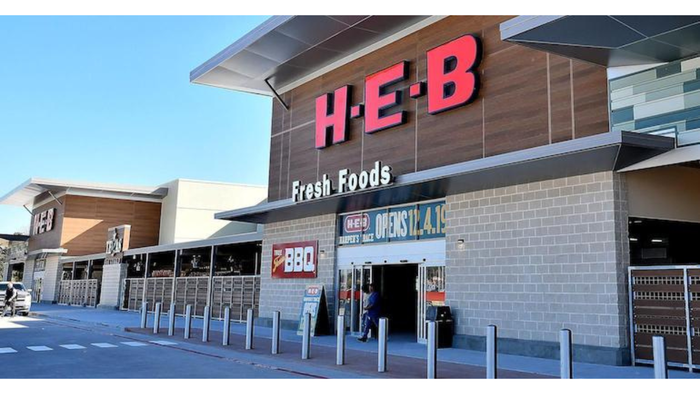The self-service scenario
January 1, 2018
While grocers have been scaling back on some of their IT investments, one area where they are spending is in self- checkout technology. By Deena M. Amato-McCoy While it may seem like a bit of an oxymoron, self-service technology is helping grocers personalize the shopping experience. Consumers can use a kiosk to learn about wine or get health tips. They can get coupons on their smartphones as they walk the aisles. When they are done, they can finish their transaction at their own pace at a self-checkout stand. This once seemingly impersonal technology is providing customers with a customized shopping trip that suits their needs and time constraints. With an eye on open, web-based solutions, many grocers, especially regional players and independent operators, are boosting store visits with innovative self-service technology solutions. While self-checkout units are at the forefront, kiosks and other self-service options are growing as well. Although many chains remain cautious with capital expenditures in this volatile economy, self-checkout investments grew 10% in 2010, according to The North American POS Study conducted by the Franklin, Tenn.-based consulting firm, IHL Group. Further, there are an estimated 100,000 units being used across the retail industry, according to Lee Holman, an analyst at IHL. The marketplace is filled with self-service options, but the ideal solutions must center around what can deliver the optimal customer experience and still deliver efficiency and improve business operations. “Some grocers are more aggressive when it comes to adopting technology for long-term strategies, but retailers of all sizes can take advantage of solutions,” says Chad Eilers, vice president, design engineering for Bowling Green, Ky.-based, Pan-Oston. “The solutions that are becoming priorities in retailers’ current self-service strategies however, are those that have a quick return on investment model, don’t cost a fortune and drive value to the shopper.” Clearly, razor-thin profit margins and sky-high operating costs, including labor and staffing, make automated self-service solutions viable opportunities for the supermarket industry. However, it is the strong consumer-driven trends that “are leading the self-service shopping revolution,” says John Saccomanno, director of industry marketing for Atlanta-based technology provider NCR Corp. “Consumers want a personal experience, to be recognized as individuals, not as a group.” It has been almost 20 years since the first self-checkout unit was installed at grocery. While it was initially met with mixed reviews, there is no denying self-checkout has evolved and it is here to stay. Many Tier 1 retailers led the charge when it came to originally embracing the technology almost two decades ago. Cincinnati-based Kroger Co., which first tried its hand at self-scanning solutions in the mid- to late-1990s, is currently evaluating the Advantage Checkout solution from Sunnyvale, Calif.-based Fujitsu America. The next-generation unit is comprised of a scanning tunnel that can identify merchandise at more than a 98% accuracy rate and can even detect hidden barcodes on items that may be stacked or placed side-by-side on conveyor belts. The new units are currently installed at select Kroger locations but officials say use could expand to other stores in the chain. “The response from both customers and associates has exceeded our expectations,” Chris Hjelm, Kroger’s CIO, noted in a news release. To promote use among shoppers with larger orders, Waldbaum’s, a division of Montvale, N.J.-based The Great Atlantic & Pacific Tea Co., uses of a combination of self-checkout devices with stationary bagging stations and units with moving conveyors. “Besides adding more units, retailers that are using devices with conveyors are encouraging greater usage among their customer base,” says Wayne Stellmach, director, marketing communications of Mount Prospect, Ill.-based Cummins-Allison Corp. Observers say smartphones are the ultimate self-service device and grocers are developing new uses and applications to attract mobile consumers. The proliferation of web-based broadband connections are supporting retailers’ kiosk connections and deployments, but they are also playing a role in a bigger consumer-driven trend—mobile retailing. “Shoppers expect the same level of service in their supermarket that they receive in every other channel they use to shop,” says Steve Cole, CMO of Gladson Interactive, a Lisle, Ill.-based provider of syndicated consumer packaged goods product images and information. Smartphones as scanners Austin, Texas-based Whole Foods enables shoppers to use their smartphones to scan product bar codes and quick response codes, also known as QR codes, to learn more information about merchandise, get nutritional information, access product reviews, even view video of product demonstrations. Tier 2 retailers, smaller players and even independents are also starting to embrace smartphones as a self-service option, due to the low cost of entry and ease of integration with existing loyalty programs. “For smaller chains however, they are looking to new configurations of the technology not only to differentiate themselves in the marketplace, but also to bring the technology to the next level of innovation,” says Pan-Oston’s Eilers. For some companies, the next step includes integrating multiple channels to bolster self-service efforts. Northfield, Ill.-based Kraft Foods has teamed with Intel, the Santa Clara, Calif.-based technology provider, to create a self-service meal planning solution. The touch-screen kiosk delivers recipes, product recommendations, coupons and even product samples. Integrating a smartphone application into the kiosk solution enables shoppers to use a two-dimensional barcode scanner to scan merchandise information and add recipe and shopping lists displayed on the kiosk to their mobile phones. Grocers are also expanding their digital presence as an extension of self-service technology, be it enhanced websites shoppers can surf at home or web-enabled kiosks at the stores. Expanded beyond their early days of being electronic billboards or glorified weekly circulars, supermarket websites are now viewed as brand extensions and vital selling channels. Providing an education Progressive chains are upping the ante by adding nutritional information, recipes, electronic coupons, customer reviews and “other useful content that helps shoppers make educated purchase decisions and complete their shopping,” says Cole. The challenge however, lies in consistency, he notes. “What is on special in the circular and online should also be available on the in-store kiosk, as well as on the store shelf.” E-commerce-based kiosks have found a home at store-level, as well as paved the way for other self-service devices that promote a faster, unique and more efficient shopping experience. For example, some chains are taking pressure off of their customer service stations with the help of coin counting units, “an option that helps shoppers redeem their loose coin efficiently so they can quickly start their shopping with more cash in hand,” explains Stellmach. Cummins-Allison’s coin-counting machines for example, process between 4,100 and 6,000 coins per minute and its FastPay Automated Payout solution distributes cash to shoppers similar to an ATM, allowing them to spend it during their shopping trip. Observers say that if retailers are learning anything however, there is not one “killer kiosk app.” Observers say some Midwest grocers are seeing positive results with deli ordering kiosks, while wine kiosks are catching the attention of shoppers in the Northeast. “These are only a couple of the items that are finding a self-service niche at grocery and more hit the marketplace seemingly on a daily basis,” says NCR’s Saccomanno.
About the Author
You May Also Like



.png?width=700&auto=webp&quality=80&disable=upscale)
